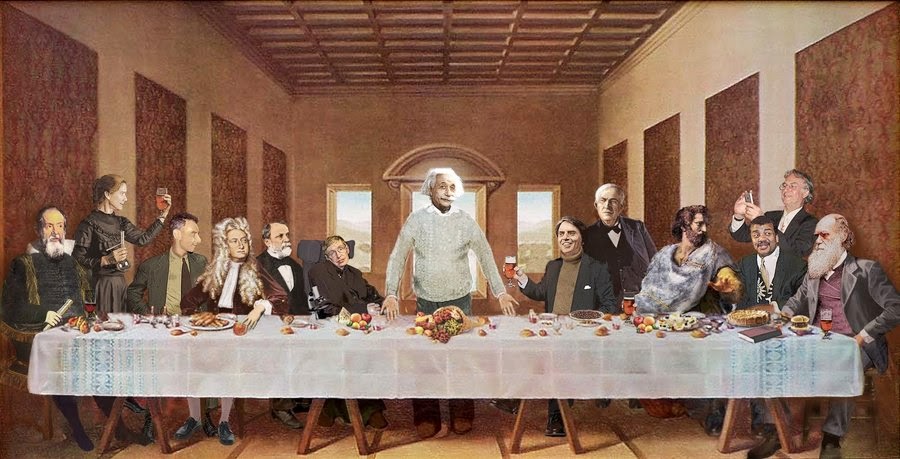If you are already a skeptic then you will find a lot of good points in this talk. If you are not a skeptic then you will find some very scary notions. It will challenge you to re-examine your belief system. But this us actually a good thing. I don't mean to tell people what to believe but I still think that everyone should question everything and learn to become a critical thinker.

I am not new to electronics. I've been interested since I was 10 years old. I've never worked professionally in electronics but I know more than the average person. I've built a number of Heathkits (am I showing my age?) and have been hacking arduinos since they first appeared. Before the arduino I did not have any real exposure to MCUs. I thought that it was time that I shared my learning with the community at large.
Monday, September 30, 2013
Monday, September 16, 2013
element15
Our community is the largest of it's kind in the world, making it the perfect environment for the turning even the smallest seeds of inspiration into big ideas that shape the future.
Monday, September 9, 2013
LCD Serial Display - Parts List
 |
| First draft of a working prototype |
- Arduino UNO
- Breadboard
- 10K POT
- 2K Resistor
- Single strand hook-up wire
- USB Cable
- LCD Display 5 x 7 dots plus cursor, 5 x 8 dots or 5 x 11 dots, dot matrix LCD (TN and STN mode.)
- Break-away male header strip
My decision to use the UNO was purely convenience driven. Any of the available arduino boards can be used for this project. At the end I will convert to using a bare processor in place of the development board. A typical arduino development board can be had for as low as $9. Some, like the nano, are breadboard pluggable.
There are a veritable glut of LCD display modules available. I paid $6 for mine at a local electronics retailer here on Toronto. You can get them from any of the on-line electronics stores as well. Chances are you'll pay more for shipping than for the display. Orion Daewoo 16x2 LCD Display Module 16216L-B-F30 is available for $2.99 plus shipping. This version does not include a backlit display. Here is a typical PDF data sheet for this type of display.
One of the things you will need to plug the display into the breadboard is a 16 pin header strip. 40 position break away headers can be purchased for less than $1 each. I'd suggest you get 4 male and 4 female headers if you are ordering on-line. They are extremely useful in all type of projects and you'll find you use them up rather quickly.
If you do not already have a breadboard, you can purchase kits that include a breadboard and a selection of pre-cut jumper wires. A good starter breadboard is the half-sized breadboard from AdaFruit Industries in New York City. A good supply of jumpers can also be had.
The USB cable usually comes with the arduino development board while the resistor and the POT can be purchased from any electronics supply. Digi-key has a good selection of resistor kits.
Here is a wiring diagram of the basic circuit.
First you will need to solder a 16 pin male header to the display board. This will allow you to plug the display into the breadboard. The header pins look like this when you get them.
You will need to cut a length of 16 conductors using diagonal cutters. The shorter side inserts in the the row of sixteen holes in the top left corner of the display board from the bottom. They should look like this.
In the next post I'll start to cover the software required for both the MCU and the Python code.
Virtually yours,
Wee Willy Wonderful
One of the things you will need to plug the display into the breadboard is a 16 pin header strip. 40 position break away headers can be purchased for less than $1 each. I'd suggest you get 4 male and 4 female headers if you are ordering on-line. They are extremely useful in all type of projects and you'll find you use them up rather quickly.
If you do not already have a breadboard, you can purchase kits that include a breadboard and a selection of pre-cut jumper wires. A good starter breadboard is the half-sized breadboard from AdaFruit Industries in New York City. A good supply of jumpers can also be had.
The USB cable usually comes with the arduino development board while the resistor and the POT can be purchased from any electronics supply. Digi-key has a good selection of resistor kits.
Here is a wiring diagram of the basic circuit.
 |
| Wiring Diagram |
First you will need to solder a 16 pin male header to the display board. This will allow you to plug the display into the breadboard. The header pins look like this when you get them.
 |
| Typical 40 pin Male Header Strip |
In the next post I'll start to cover the software required for both the MCU and the Python code.
Virtually yours,
Wee Willy Wonderful
Subscribe to:
Posts (Atom)
